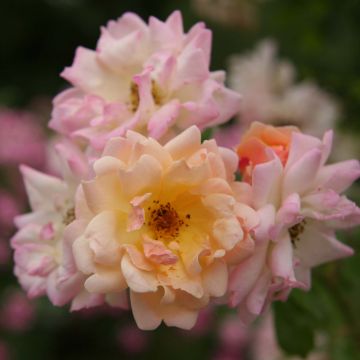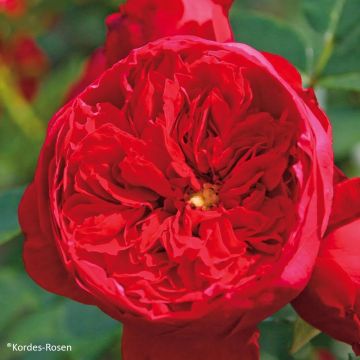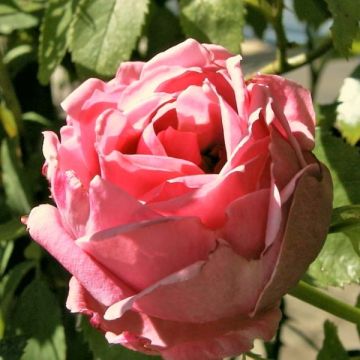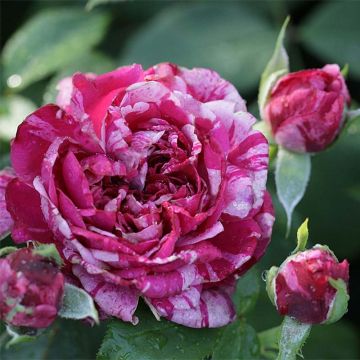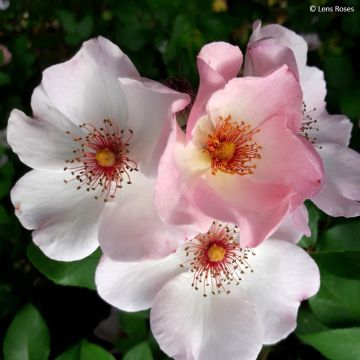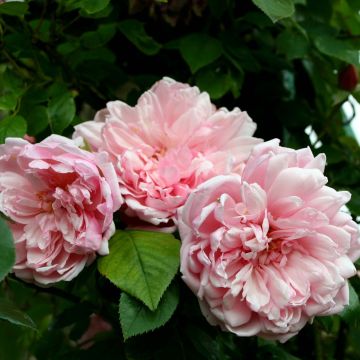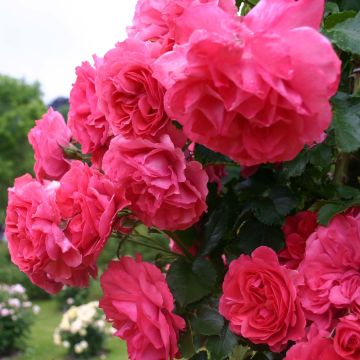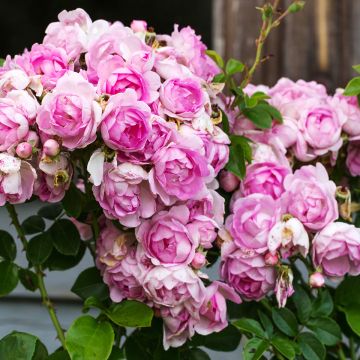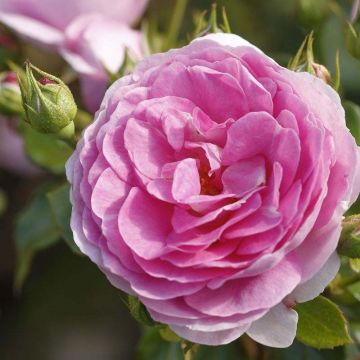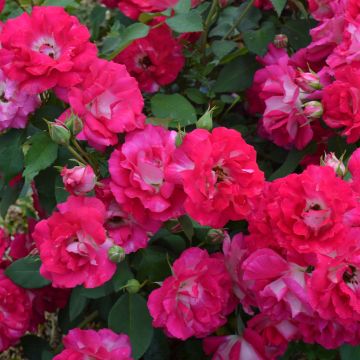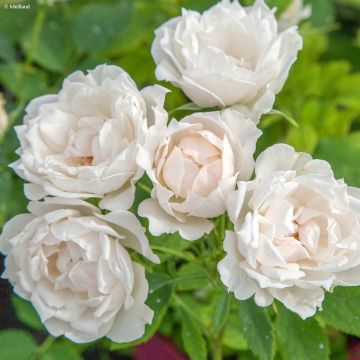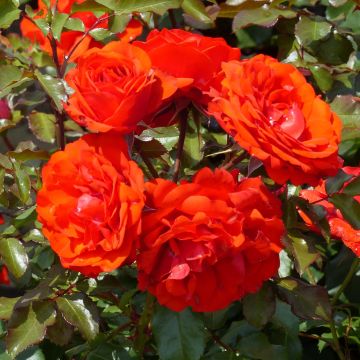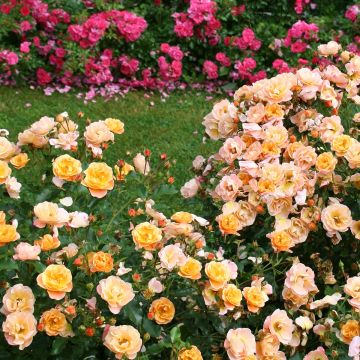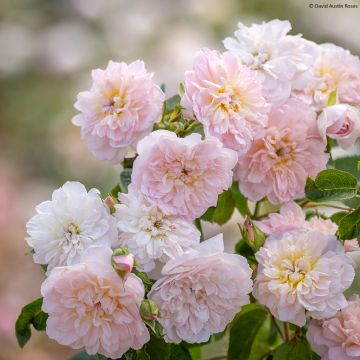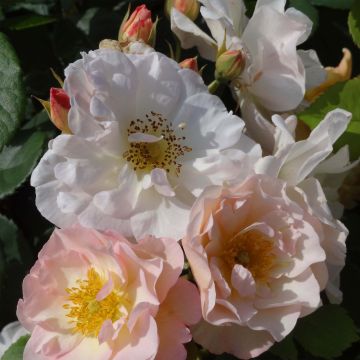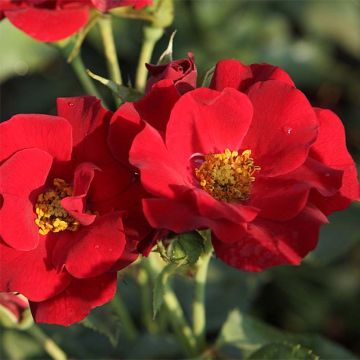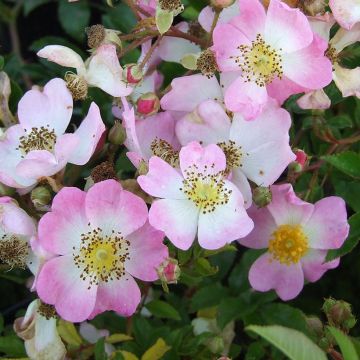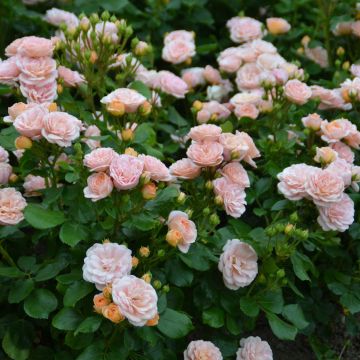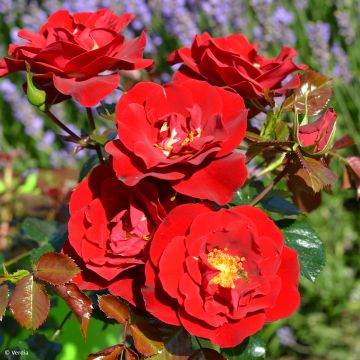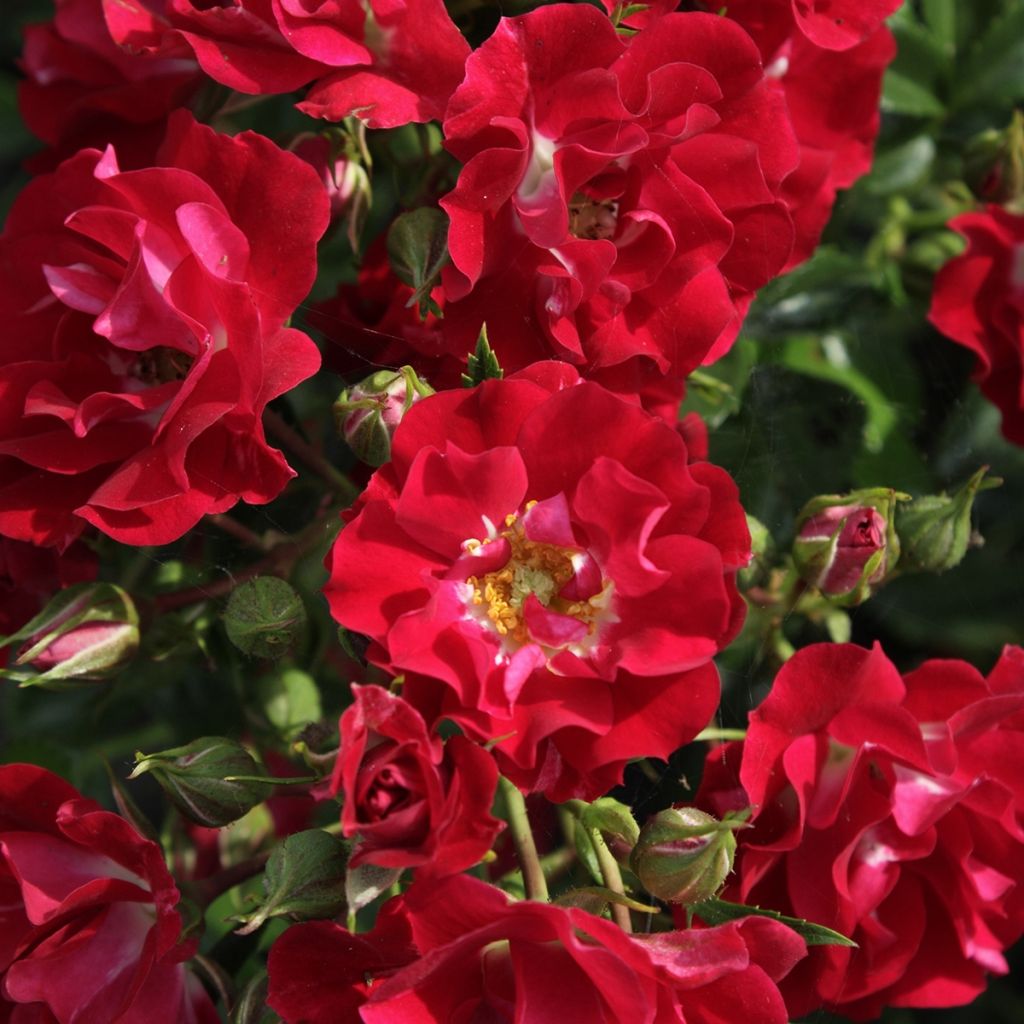

Rosa 'Rambling Rosie' - Rambling Rose
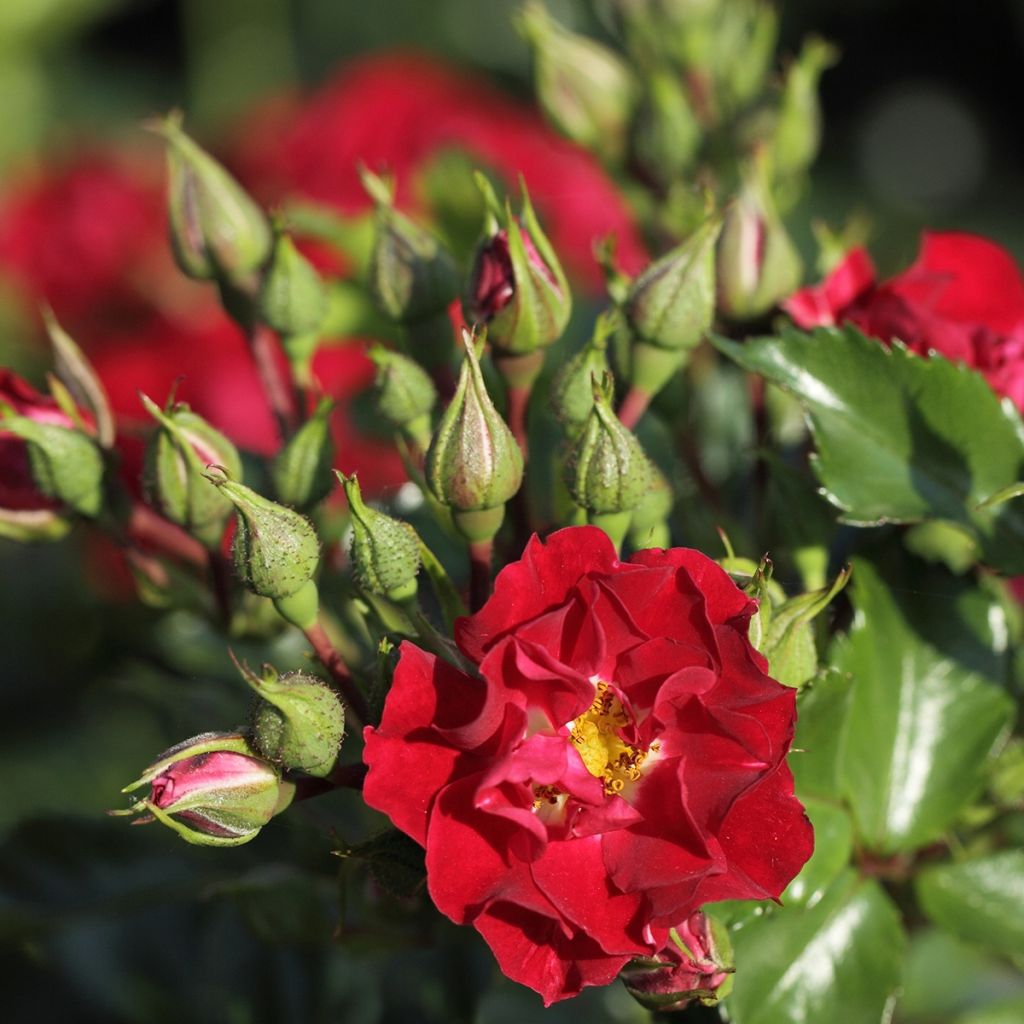

Rosa 'Rambling Rosie' - Rambling Rose
Rosa 'Rambling Rosie' - Rambling Rose
Rosa Rambling Rosie 'Horjasper'
Horjasper
This item cannot be shipped to the selected country
Delivery charge from €5.90
Delivery charge from €5.90
Delivery to Corse prohibited
More information
Schedule delivery date,
and select date in basket
This plant carries a 6 months recovery warranty
More information
We guarantee the quality of our plants for a full growing cycle, and will replace at our expense any plant that fails to recover under normal climatic and planting conditions.
From €5.90 for pickup delivery and €6.90 for home delivery
Express home delivery from €8.90.
From €5.90 for pickup delivery and €6.90 for home delivery
Express home delivery from €8.90.
Delivery to Corse prohibited: UE law prohibits the import of this plant from mainland France to Corse as part of the fight against Xylella fastidiosa. Please accept our sincere apologies.
More information

Does this plant fit my garden?
Set up your Plantfit profile →
Description
The 'Rambling Rosie' climbing rose, not very tall but incredibly generous, is covered in large clusters of countless small double flowers with a bright crimson red and white eye. And the radiant spectacle of its flowering is repeated tirelessly from June to October, much to the gardener's delight. It is perfectly highlighted by its small leaves of a beautiful, vibrant green, shiny, which remain attractive throughout the season. This small climbing rose with an open habit is a plant full of life, easy to grow even in poor soil, and versatile. It can also be trained as a large bush according to the preferences of each gardener.
The Rambling Rosie rose is a creation by Horner introduced in 2005, it has been awarded by the R.H.S in England for its ornamental qualities and performance in the garden. This horticultural hybrid belongs to the family of floribunda roses, whose flowers are gathered in bouquets. Its growth is fast; it develops long, erect, woody climbing stems, green and more or less covered with sharp and reddish prickles, flexible enough to be trained. This variety shows a slightly bushy habit, easily reaching a height of 2.75 m (9ft) with a minimum span of 1.75 m (6ft). Its long stems are covered with glossy and tough foliage, divided into small dentate leaflets, resistant to rose diseases under good growing conditions. The countless small, hardly double rosettes of 'Rambling Rosie', measuring 2.5 to 3 cm (1in) wide, appear in June-July and renew themselves for three months. They emerge on short shoots from the second year in clusters of several tens of buds. Their colour is an intense red, which contrasts beautifully with the pure white throat of the flower. Dazzling, they are unfortunately almost devoid of fragrance.
'Rambling Rosie' is a strikingly charming rose that radiates under the sun and attracts all eyes in the garden. It will be planted solely for its robustness and floribundity. Like other climbers, it is incomparable for adorning a gate, fences, and small pergolas, but it can also be used as a bush by regularly pruning it to encourage branching and limit its height. Its red flowering pairs well with the 'Prince Charles' clematis, blue, or Miss Bateman, with white flowers. It is an ideal companion for dead trees that it will revive or shed, adding great charm. Trained on an arch, installed on an unsightly fence or a somewhat austere shed, it dresses up any setting without demanding much effort from the one who planted it.
Report an error about the product description
Plant habit
Flowering
Foliage
Botanical data
Rosa
Rambling Rosie 'Horjasper'
Rosaceae
Horjasper
Cultivar or hybrid
Other Climbing Roses
Planting and care
The Rambling Rosie climbing rose thrives in sunny areas but doesn't like hot and confined spots that can increase its susceptibility to powdery mildew. Avoid training it against a south or west-facing wall. It can tolerate excessive limestone but prefers fertile and rather fresh soils to reach its full potential. It will adapt to any garden if the soil is well-worked and sufficiently rich. To plant the rose, crumble the soil and add an amendment like blood, fish and bone at the bottom of the planting hole. Water generously after planting to eliminate air pockets. Water regularly for a few weeks to support root establishment and the first two dry and hot summers. Pruning is only necessary to control growth. If the spread bothers you, don't hesitate to reduce its branches.
Roses do not need to be worried about unsightly stains at the end of summer, as they are a harmless and natural occurrence.
Planting period
Intended location
Care
This item has not been reviewed yet - be the first to leave a review about it.
Roses by purpose
Haven't found what you were looking for?
Hardiness is the lowest winter temperature a plant can endure without suffering serious damage or even dying. However, hardiness is affected by location (a sheltered area, such as a patio), protection (winter cover) and soil type (hardiness is improved by well-drained soil).

Photo Sharing Terms & Conditions
In order to encourage gardeners to interact and share their experiences, Promesse de fleurs offers various media enabling content to be uploaded onto its Site - in particular via the ‘Photo sharing’ module.
The User agrees to refrain from:
- Posting any content that is illegal, prejudicial, insulting, racist, inciteful to hatred, revisionist, contrary to public decency, that infringes on privacy or on the privacy rights of third parties, in particular the publicity rights of persons and goods, intellectual property rights, or the right to privacy.
- Submitting content on behalf of a third party;
- Impersonate the identity of a third party and/or publish any personal information about a third party;
In general, the User undertakes to refrain from any unethical behaviour.
All Content (in particular text, comments, files, images, photos, videos, creative works, etc.), which may be subject to property or intellectual property rights, image or other private rights, shall remain the property of the User, subject to the limited rights granted by the terms of the licence granted by Promesse de fleurs as stated below. Users are at liberty to publish or not to publish such Content on the Site, notably via the ‘Photo Sharing’ facility, and accept that this Content shall be made public and freely accessible, notably on the Internet.
Users further acknowledge, undertake to have ,and guarantee that they hold all necessary rights and permissions to publish such material on the Site, in particular with regard to the legislation in force pertaining to any privacy, property, intellectual property, image, or contractual rights, or rights of any other nature. By publishing such Content on the Site, Users acknowledge accepting full liability as publishers of the Content within the meaning of the law, and grant Promesse de fleurs, free of charge, an inclusive, worldwide licence for the said Content for the entire duration of its publication, including all reproduction, representation, up/downloading, displaying, performing, transmission, and storage rights.
Users also grant permission for their name to be linked to the Content and accept that this link may not always be made available.
By engaging in posting material, Users consent to their Content becoming automatically accessible on the Internet, in particular on other sites and/or blogs and/or web pages of the Promesse de fleurs site, including in particular social pages and the Promesse de fleurs catalogue.
Users may secure the removal of entrusted content free of charge by issuing a simple request via our contact form.
The flowering period indicated on our website applies to countries and regions located in USDA zone 8 (France, the United Kingdom, Ireland, the Netherlands, etc.)
It will vary according to where you live:
- In zones 9 to 10 (Italy, Spain, Greece, etc.), flowering will occur about 2 to 4 weeks earlier.
- In zones 6 to 7 (Germany, Poland, Slovenia, and lower mountainous regions), flowering will be delayed by 2 to 3 weeks.
- In zone 5 (Central Europe, Scandinavia), blooming will be delayed by 3 to 5 weeks.
In temperate climates, pruning of spring-flowering shrubs (forsythia, spireas, etc.) should be done just after flowering.
Pruning of summer-flowering shrubs (Indian Lilac, Perovskia, etc.) can be done in winter or spring.
In cold regions as well as with frost-sensitive plants, avoid pruning too early when severe frosts may still occur.
The planting period indicated on our website applies to countries and regions located in USDA zone 8 (France, United Kingdom, Ireland, Netherlands).
It will vary according to where you live:
- In Mediterranean zones (Marseille, Madrid, Milan, etc.), autumn and winter are the best planting periods.
- In continental zones (Strasbourg, Munich, Vienna, etc.), delay planting by 2 to 3 weeks in spring and bring it forward by 2 to 4 weeks in autumn.
- In mountainous regions (the Alps, Pyrenees, Carpathians, etc.), it is best to plant in late spring (May-June) or late summer (August-September).
The harvesting period indicated on our website applies to countries and regions in USDA zone 8 (France, England, Ireland, the Netherlands).
In colder areas (Scandinavia, Poland, Austria...) fruit and vegetable harvests are likely to be delayed by 3-4 weeks.
In warmer areas (Italy, Spain, Greece, etc.), harvesting will probably take place earlier, depending on weather conditions.
The sowing periods indicated on our website apply to countries and regions within USDA Zone 8 (France, UK, Ireland, Netherlands).
In colder areas (Scandinavia, Poland, Austria...), delay any outdoor sowing by 3-4 weeks, or sow under glass.
In warmer climes (Italy, Spain, Greece, etc.), bring outdoor sowing forward by a few weeks.


































